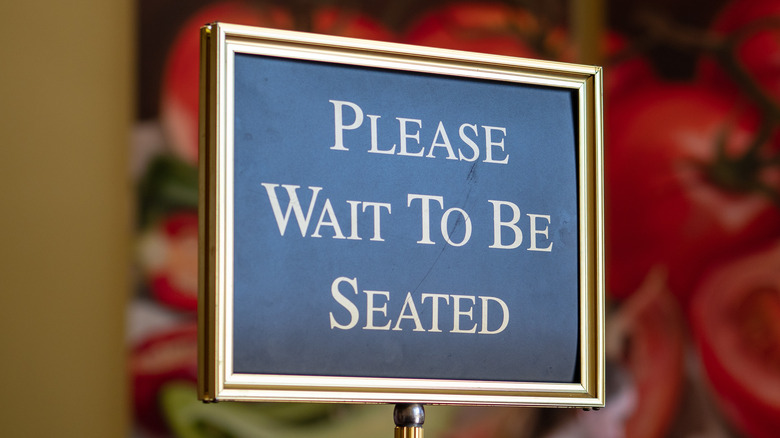The Real Reason Restaurant Wait Times Are Often Overestimated
During the height of the pandemic, many took note of a trend in which restaurant workers burned out as a result of an increasingly irate customer base. This was one of the causes of the oft-talked-about staffing shortages that have plagued the industry. More recently, The Detroit News published a piece pleading with its readers to be patient as many restaurants have been pushed to the breaking point by rude customers.
Of course, on some level, unhappy customers aren't anything new to restaurants, but potential solutions to reduce their numbers are always of special note to restauranteurs. National Computer Corporation, a global business services company, has offered various tech-based ways to alleviate the frustration that could taint a restaurant's brand with the word "slow."
For example, the company suggests that restaurants use self-service kiosks, implement online ordering systems, or even offer a table-side ordering system. When it comes to reducing the pressure of customers who have to wait to even enter the establishment, however, servers have a more low-tech solution: lines.
Hosts err on the side of caution
There is a whole field of study devoted to how people react to queuing. Qminder, a company dedicated to solving the problems associated with waiting in line, has a blog post that lays out the various things that people need in order to patiently wait for extended periods of time. Essentially, people need to believe that the queue is fair and that it is progressing.
Part of the idea that a line is progressing comes from the white lie that hosts give to potential customers. They overestimate the time it will take before a table in the restaurant is available. Philadelphia explains that even though a host may say you will wait for an hour, they will try to get you seated before then. The logic for this is explained in a paper published by SSRN. If the restaurant succeeds in seating the customer before the hour has passed, the customer is pleased with the good fortune. If the restaurant fails, the customer has been prepared for a longer wait than the host expected.
There are two things to keep in mind, though. First, if the projected wait is overly long, customers may feel discouraged. Second, the paper was published before the stresses of the pandemic and inflation began hurting small restaurants. As a result, even though the tactic may work on many customers, hosts are still dealing with an already more volatile customer base. If people exercise patience, though, it will most likely be rewarded.

